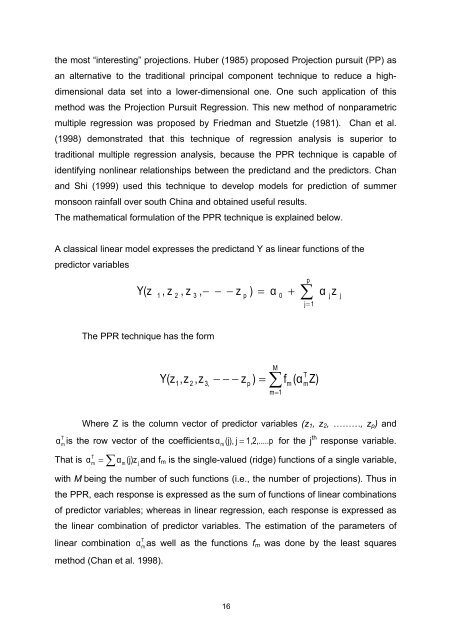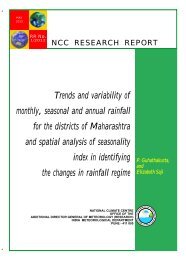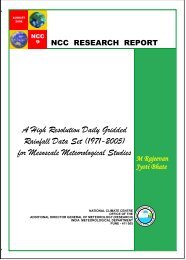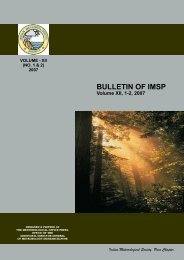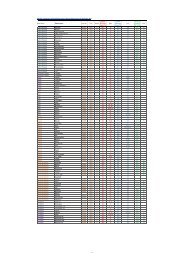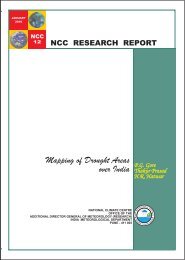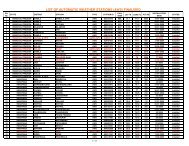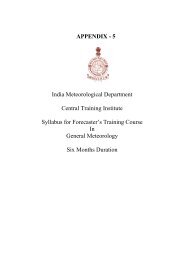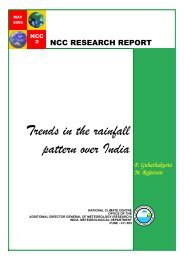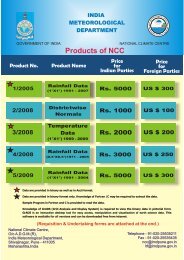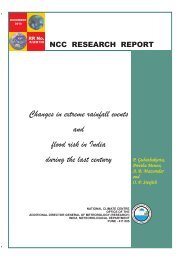NCC Report No. 1 - (IMD), Pune
NCC Report No. 1 - (IMD), Pune
NCC Report No. 1 - (IMD), Pune
Create successful ePaper yourself
Turn your PDF publications into a flip-book with our unique Google optimized e-Paper software.
the most “interesting” projections. Huber (1985) proposed Projection pursuit (PP) asan alternative to the traditional principal component technique to reduce a highdimensionaldata set into a lower-dimensional one. One such application of thismethod was the Projection Pursuit Regression. This new method of nonparametricmultiple regression was proposed by Friedman and Stuetzle (1981). Chan et al.(1998) demonstrated that this technique of regression analysis is superior totraditional multiple regression analysis, because the PPR technique is capable ofidentifying nonlinear relationships between the predictand and the predictors. Chanand Shi (1999) used this technique to develop models for prediction of summermonsoon rainfall over south China and obtained useful results.The mathematical formulation of the PPR technique is explained below.A classical linear model expresses the predictand Y as linear functions of thepredictor variablesY(zp1, z2, z3, − − − zp) = α0+ ∑ αjzj=1jThe PPR technique has the formY(z1,z2,z3,− − − zp) = ∑ fMmm=1(αTmZ)TmWhere Z is the column vector of predictor variables (z 1 , z 2 , ………, z p ) andα is the row vector of the coefficients α m(j), j = 1,2,.....p for the j th response variable.That isα = ∑α (j)z and f m is the single-valued (ridge) functions of a single variable,Tmmjwith M being the number of such functions (i.e., the number of projections). Thus inthe PPR, each response is expressed as the sum of functions of linear combinationsof predictor variables; whereas in linear regression, each response is expressed asthe linear combination of predictor variables. The estimation of the parameters oflinear combination α T mas well as the functions f m was done by the least squaresmethod (Chan et al. 1998).16


